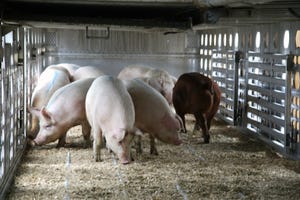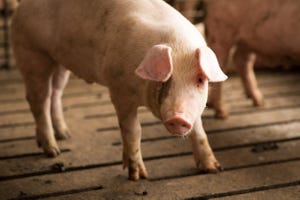Analyzing the relationship between pig body weight and variation
Market weight variation impacts pork retail product dimensions, which can reduce packer cutout values.
January 14, 2021
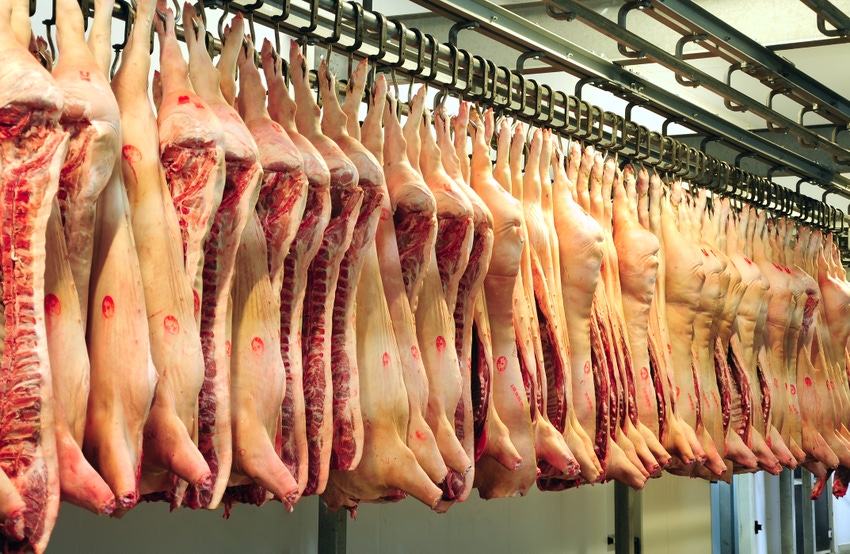
Weight variation in a population of pigs is inherent, and if this variation is high in early growth, it is very likely to be maintained throughout the rest of the growth stages. Body weight variation has been a concern for the swine industry as it is related to economic loss or profit for producers. For lightweight pigs, additional days on feed and feed cost in order to achieve target weights above a sort loss discount weight can reduce economic return for the producer. Pig market weight variation also impacts pork retail product dimensions, which can reduce packer cutout values.
Even though the financial implications of this are widely known, there is a lack of knowledge of pig variations drivers in a population. In addition, little information has been summarized on the amount of weight variation present in general pig growing populations.
Therefore, the aim of this systematic review and meta-analysis was to understand the changes on pig body weight variation from birth to market as well as to develop prediction equations for coefficient of variation (CV) and standard deviation (SD) as a function of body weight. Data collected from 16 papers with 204 data points yielded 117,268 individually weighed pigs with a sample size that ranged from 104 to 4,108 pigs. Polynomial regression analysis was conducted separately for each variation measurement. When CV was reported in the data set, SD was calculated and vice versa.
The resulting prediction equations were: CV (%) = 20.04 – 0.0605 × (BW) + 0.0000875 × (BW)2, R2 = 0.79; SD = 0.92 + 0.1478 × (BW) - 0.0001784 × (BW)2, R2 = 0.95. Body weight (BW) in the equations would be in pounds (lbs.). Data suggest that the mean CV of a population and body weight of pigs have a decreasing quadratic relationship with the rate of decrease being smaller as mean body weight of pigs increases from birth to market (Figure 1).
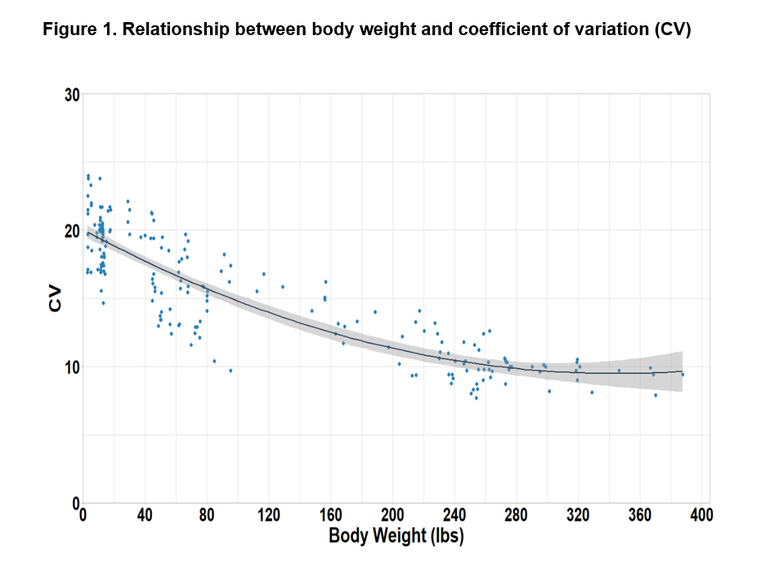
Conversely, for the SD of a population, the rate of increase is smaller as mean body weight of pigs increases from birth to market (Figure 2).
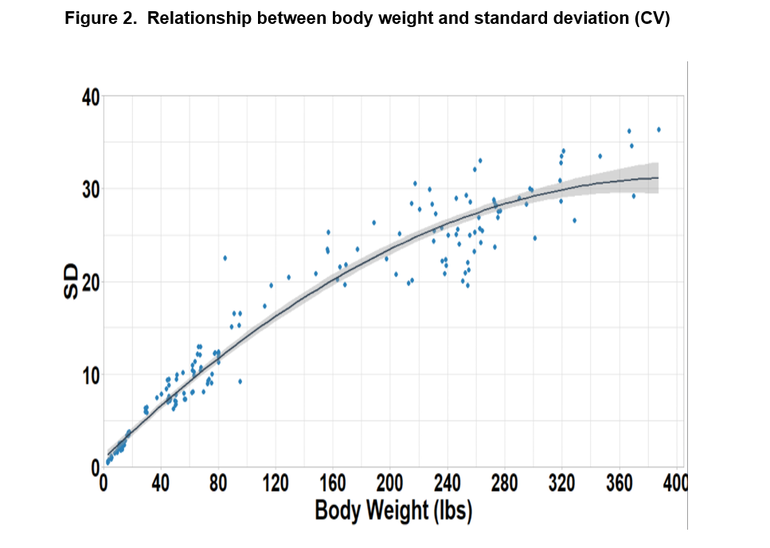
Research has been conducted to identify nutrition and management practices to reduce population variation. The majority of this work focused on improving the growth rate of all pigs, but particularly the lightest pigs in the population. Pre-weaning strategies that have shown to have an impact on pig population weight variation include litter size, parity, weaning age and split suckle management. For post-weaning strategies, nursery dietary programs, feed management for the lightest pigs, gender rearing, floor space, feeder space, dietary energy and health status all can influence pig population weight variation. Additional research is needed in several areas to help refine or verify the results of these topic areas and determine which can have a positive net return for swine producers.
In summary, these prediction equations can be now used by swine producers, veterinarians, nutritionists, geneticists, and other advisors to more accurately estimate CV and SD of body weight variation among a population of pigs from birth until market weight. Additional information on this topic was presented at the 2020 K-State Swine Day and can be located here.
Sources: Andres Tolosa, Mike Tokach, Joel DeRouchey, Jason Woodworth, Robert Goodband, Jordan Gebhardt, Matthew Ritter and Chad Pilcher, Kansas State University, Provimi North America, are solely responsible for the information provided, and wholly own the information. Informa Business Media and all its subsidiaries are not responsible for any of the content contained in this information asset.
You May Also Like

